#dharamshala in india
Explore tagged Tumblr posts
Text
Himachal Best Tour
In 1864, India named Shimla its summer capital. After independence, Shimla became the capital of Himachal Pradesh, having previously served as the capital of Punjab. In 1903, work on building a railway between Kalka and Shimla started. Shimla has experienced every conceivable natural bounty. The Himalayas covered with snow, forests, orchards, songbirds, and streams are all commonly connected to Manali. An ancient trade route really starts in Manali and goes across the Rohtang and Baralacha passes, Lahul and Ladakh to reach Kashmir, and then connects with Spiti by an other route. Dharamshala is a quaint hill resort in the Indian state of Himachal Pradesh, known for its stupendous natural beauty, Buddhist monasteries, and vibrant culture. The town is highly known for its delicious food as well, providing a wide variety of dishes to fit every desire and taste.
For more information please visit our website Trip Counselors.

#shimla#himachal pradesh shimla#himachal shimla#shimla town#shimla tourist places#manali#himachal manali#himachal pradesh kullu manali#himachal pradesh manali#kullu and manali#dharamshala#dharamsala himachal#dharamshala city#dharamshala in india#dharamshala himachal#dharamshala himachal pradesh#trip counselors#trip planner#tour planner#travel plan#plan my trip#vacation planner#solo trip#travel with friends#couple tour#tour and travel#easy trip planners#itinerary planner
0 notes
Text

Dharamshala, India
Langurs groom each other
Photograph: Ashwini Bhatia/AP
16 notes
·
View notes
Text

Dharamshala, India
#mcleod ganj#dharamshala#india#asia#dailystreetsnapshots#travel#street#photography#streets#places#colorful#nature#mountain towns#himalaya#Dhauladhar
12 notes
·
View notes
Text

Naddi, Dharamshala, Himachal Pradesh, India
Rimjhim Agrawal
2 notes
·
View notes
Text
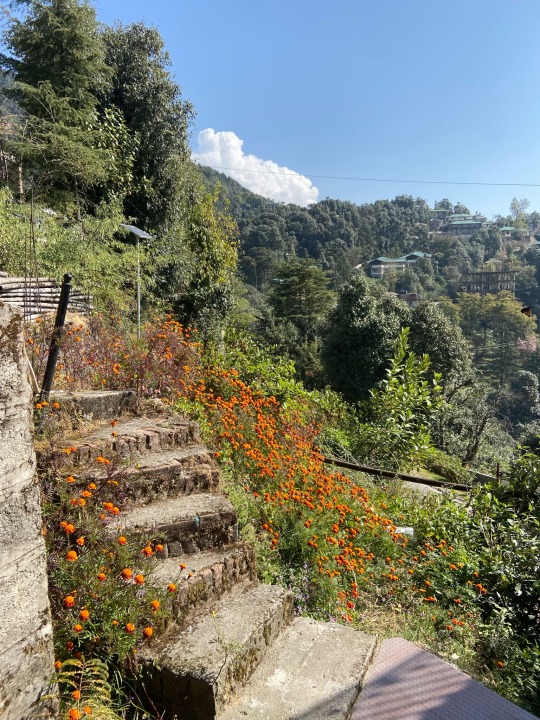
Stairway to bliss.
8 notes
·
View notes
Text

get me back here rn
2 notes
·
View notes
Text
McLeod Ganj, nestled amidst the picturesque Dhauladhar Range in Himachal Pradesh, is renowned as the residence of the Tibetan spiritual leader, the Dalai Lama. This serene hill station is not only a cultural hub but also a gateway to numerous natural and spiritual experiences in the lap of the Himalayas. Beyond its popular attractions, exploring offbeat places in McLeod Ganj unveils hidden gems that offer a glimpse into its rich heritage and tranquil landscapes.

One of the lesser-known treasures in McLeod Ganj is the St John Wilderness Church, a quaint Anglican church that dates back to the British colonial era. Surrounded by lush greenery and serene mountain vistas, this church exudes a peaceful charm and offers a retreat from the bustling town center. Its serene ambiance and historical significance make it a must-visit for travelers seeking moments of quiet reflection amidst nature.

Another hidden gem awaits in the outskirts of McLeod Ganj—the serene Dal Lake in Tota Rani Village. Far removed from the crowds, this small lake is a perfect spot for a peaceful retreat amidst pristine surroundings. Encircled by verdant forests and offering stunning views of the surrounding hills, Dal Lake is ideal for picnics, leisurely walks, and soaking in the natural beauty of Himachal Pradesh.
Exploring McLeod Ganj offbeat places promises a unique journey off the beaten path, where each discovery unveils a different facet of this Himalayan haven. Whether you're exploring the historic church's architecture or finding tranquility by the serene lakeside, McLeod Ganj offers a perfect blend of spirituality, nature, and cultural richness for travelers seeking an enriching escape in India's mountainous landscapes.
#clearholidays#mcleod ganj#mcleod ganj tourism#places to visit in dharamshala#offbeat places#offbeat tourism#himachal pradesh#himachaltourism#india#indian#travel#india travel#india tourism#incredible india#mcleod ganj offbeat places#offbeat places in mcleod ganj
2 notes
·
View notes
Text
3 notes
·
View notes
Text
🏏 #TEST Match #LIVE #Today - #INDIAvsENGLAND !
At The #HPCA Int'l #Stadium in #Dharamsala #HimachalPradesh !

@IndianCricketTeam
#INDvsENG ... #INDIA vs #ENGLAND ~
( #5Day #International #Cricket #TestMatch #Match )
N Cmon #TeamINDIA #Cmon, #Win this 1 too #Guys !
Heartiest #Wishes,
#AmittARORA
www.AmittARORA.Luxury
#indian cricket team#india#england#england cricket#test match#dharamshala#himachal pradesh#love#respect#amitt arora#amitt#aa
2 notes
·
View notes
Text
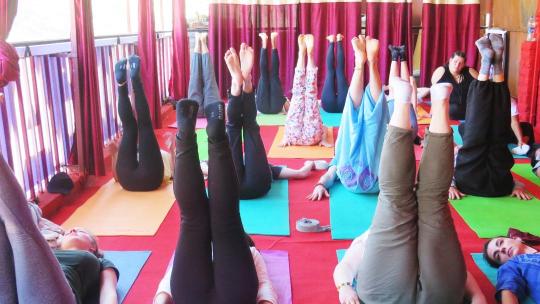
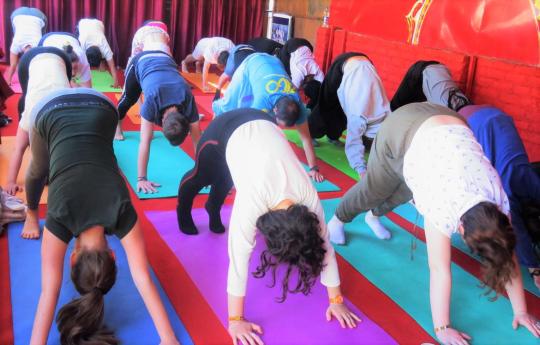
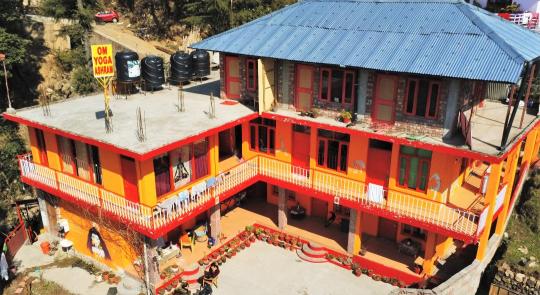
Yoga Retreat Participant follows a disciplined schedule of activities, with the help of Yoga classes, healthy meals, and the spiritual environment under the guidance of more experienced practitioners. A Yoga Retreat ensures plenty of time for relaxation, solitude, and personal practice to refine self-expression; it also provides opportunities to be outside in nature. Ultimately it helps disconnect from the busy schedule of life to be able to focus quality time being with the self in an authentic manner. This, in turn, can dramatically improve our relationship with our own self with a brighter sense of well-being. Contact- rb.gy/881mcp and rb.gy/pknjo0 Mob- 9816494732
#yoga#yogaposes#workout#yogaeveryday#yogi#fit#meditation#yogaeverywhere#health#love#meditationmusic#dharamshala#travel#mcleodganj#himachalpradesh#himachaltourism#himachali#himachal pradesh#india#indian
3 notes
·
View notes
Text
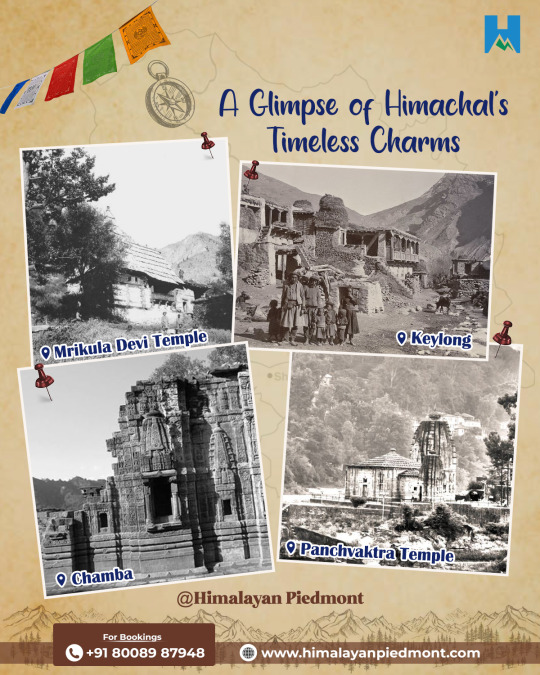
Experience the magic of vintage Himachal Pradesh😍📸
Book your adventure to Himachal! ☎+918008987948 Visit: linktr.ee/himalayanpiedmont
#vintagehimachalpradesh#himachalpradesh#himachal#vintageindia#oldworldcharm#history#culture#india#nature#travel#manali#kasol#dharamshala#shimla#kullu#leh
2 notes
·
View notes
Text
youtube
Exploring Mcleodganj & Dharamshala
#mcleodganj#dharamshala#places to visit in mcleodganj#places to visit in dharamshala#places to visit in Himachal Pradesh#indian tourism#promoting indian tourism#india#indian heritage#indian culture#shivangi bhardwaj#Youtube
3 notes
·
View notes
Text
The Untold Story of the 1965 War: When Bombs Fell on Dharamshala
#1965 conflict#1965 War#Charan Khad unexploded bomb#Dharamshala bombings#Dharamshala College#Dharamshala history#Himachal Pradesh#India-Pakistan war#kullu#Pakistan bombs Dharamshala#Pakistani pilot#unexploded bombs#Upper Barol crater#war memories
0 notes
Text

Minerva Study Circle is a Coaching Institute In Dharamshala Himachal_Pradesh, that offers #classes for #entrance_exams and #higher_education. It is located near the #Clock_Tower in #Sidhbari. #Courses offered are #NEET, #JEE, #NDA, #CUET, and #Career_Foundation_Course.
Features:
Expert faculty, Mock tests, Syllabus coverage, Time management, Personalized mentorship, Progress tracking, Personality development, Communication skills, and Leadership development.
Other information:
The institute is open Monday through Saturday from 9 AM to 6 PM and is closed on Sunday.
The institute has a Career Foundation Course for classes 9th and 10th.
The institute offers periodic tests to help students develop a competitive temperament.
#best coaching institute in dharamshala for neet#best coaching institute in dharamshala for nda#best coaching institute in dharamshala for jee#college life#classroom#Minerva Study Circle#BEST COACHING INSTITUTE IN INDIA
0 notes
Text
Sound Healing Teacher Training in Rishikesh
Rishikesh, the spiritual hub of India, is celebrated for its deep-rooted traditions in yoga, meditation, and holistic healing practices. Adding to its array of transformative offerings, Sound Healing Teacher Training in Rishikesh is emerging as a sought-after program for wellness seekers and aspiring healers. This immersive training goes beyond personal healing, empowering participants to share the gift of sound therapy with others.
If you’re looking to enhance your healing practice or embark on a fulfilling teaching journey, sound healing teacher training in Rishikesh offers the perfect environment, tools, and knowledge to realize your goals.
What is Sound Healing Teacher Training?
Sound healing teacher training equips participants with the skills, knowledge, and spiritual insight needed to practice and teach sound therapy. This training delves into the science of sound vibrations and their impact on physical, mental, and emotional well-being. Using instruments like Tibetan singing bowls, gongs, tuning forks, and crystal bowls, participants learn to facilitate sound healing sessions for individuals and groups.
Why Choose Rishikesh for Sound Healing Teacher Training?

Known as the “Yoga Capital of the World,” Rishikesh is more than a destination—it's an experience. Here's why Rishikesh stands out as the ideal location for sound healing teacher training:
Serene Environment: Surrounded by the majestic Himalayas and the sacred Ganges River, Rishikesh offers a tranquil setting conducive to spiritual growth and learning.
Spiritual Legacy: The city is a sanctuary for seekers, hosting numerous ashrams, retreats, and healing centers with a profound understanding of ancient wisdom.
Expert Teachers: Many sound healing training programs in Rishikesh are led by seasoned teachers with years of experience in both traditional and modern sound healing techniques.
Holistic Approach: Training programs in Rishikesh blend sound healing with yoga, meditation, and Ayurveda, providing a well-rounded learning experience.
Community of Seekers: The city attracts like-minded individuals from across the globe, fostering a sense of community and shared purpose.
What to Expect in Sound Healing Teacher Training in Rishikesh
Sound healing teacher training typically spans 7 to 14 days and includes a mix of theory, practical sessions, and self-reflection. Here’s an overview of what the training entails:
1. Introduction to Sound Healing
History and origins of sound therapy
Scientific principles of sound vibrations and frequencies
Understanding the chakras and their connection to sound
2. Mastering Healing Instruments
Techniques for using Tibetan singing bowls, gongs, and tuning forks
Working with crystal bowls and other instruments for specific healing outcomes
Learning how to create harmonious soundscapes for therapy sessions
3. Techniques and Applications
Facilitating individual and group sound healing sessions
Techniques for relaxation, stress relief, and emotional balance
Integrating sound healing into yoga and meditation practices
4. Teacher Training Essentials
How to structure and lead a sound healing class or workshop
Developing confidence as a sound healing teacher
Guidance on creating a professional practice
5. Personal Transformation
Deepening self-awareness through sound meditation
Daily yoga and pranayama sessions to enhance energy flow
Building a personal connection with the instruments and their vibrations
Benefits of Sound Healing Teacher Training
Sound healing teacher training in Rishikesh offers a host of benefits, both personal and professional:
Enhanced Self-Awareness: Training fosters introspection, helping you connect with your inner self.
Professional Growth: Certification enables you to teach and practice sound healing globally.
Stress Relief and Emotional Balance: The training itself is a therapeutic experience, helping participants release stress and cultivate inner peace.
Community Building: You’ll connect with a global network of sound healers and wellness practitioners.
Holistic Skill Set: Combining sound therapy with yoga, meditation, or other healing modalities enhances your offerings as a wellness professional.
Best Sound Healing Instruments for Beginners
If you're new to sound healing, these instruments are beginner-friendly and widely used in teacher training:
Tibetan Singing Bowls: Easy to use and versatile for personal and group sessions.
Crystal Bowls: Known for their powerful vibrations, ideal for deep healing.
Gongs: Excellent for creating immersive sound baths.
Tuning Forks: Precise instruments for targeting specific frequencies and chakras.
How to Prepare for Sound Healing Teacher Training
Open Mind and Heart: Be ready to embrace a transformative journey.
Healthy Lifestyle: Maintain a balanced diet and regular meditation practice before the training.
Comfortable Clothing: Wear attire suitable for meditation, yoga, and healing sessions.
Notebook and Pen: Keep a journal to record insights and techniques during training.
Also Read: - 200 Hour Yoga Teacher Training in Rishikesh
Frequently Asked Questions (FAQs)
Q1: Do I need prior experience in sound healing to join the training? No prior experience is required. Most programs in Rishikesh are beginner-friendly and designed to guide participants step-by-step.
Q2: Will I receive a certification after the training? Yes, most sound healing teacher training programs in Rishikesh provide certification, enabling you to practice and teach globally.
Q3: What accommodation options are available during the training? Many programs include accommodation in serene ashrams or retreat centers, offering comfortable and spiritually uplifting environments.
Q4: How can I integrate sound healing into my current practice? Sound healing complements practices like yoga, meditation, and therapy, making it a versatile tool for wellness professionals.
Q5: Are the instruments provided during training? Yes, most training programs provide instruments for practice. You may also purchase your own for continued practice after the training.
Q6: How long does the training take? Sound healing teacher training in Rishikesh typically lasts 7 to 14 days, depending on the program.
Conclusion
Embarking on a Sound Healing Teacher Training in Rishikesh is a journey of self-discovery, growth, and empowerment. Whether you’re looking to deepen your personal practice, expand your wellness offerings, or teach sound healing professionally, Rishikesh offers the ideal setting for this transformative experience.
Immerse yourself in the sacred vibrations of sound, guided by expert teachers, and leave with the skills and confidence to bring healing to yourself and others. Take the first step toward a fulfilling path as a sound healer in the spiritual heart of India.
#Sound Healing Teacher Training in Rishikesh#best sound healing in rishikesh#sound healing course dharamshala#sound healing course near me#sound healing training certification india
0 notes
